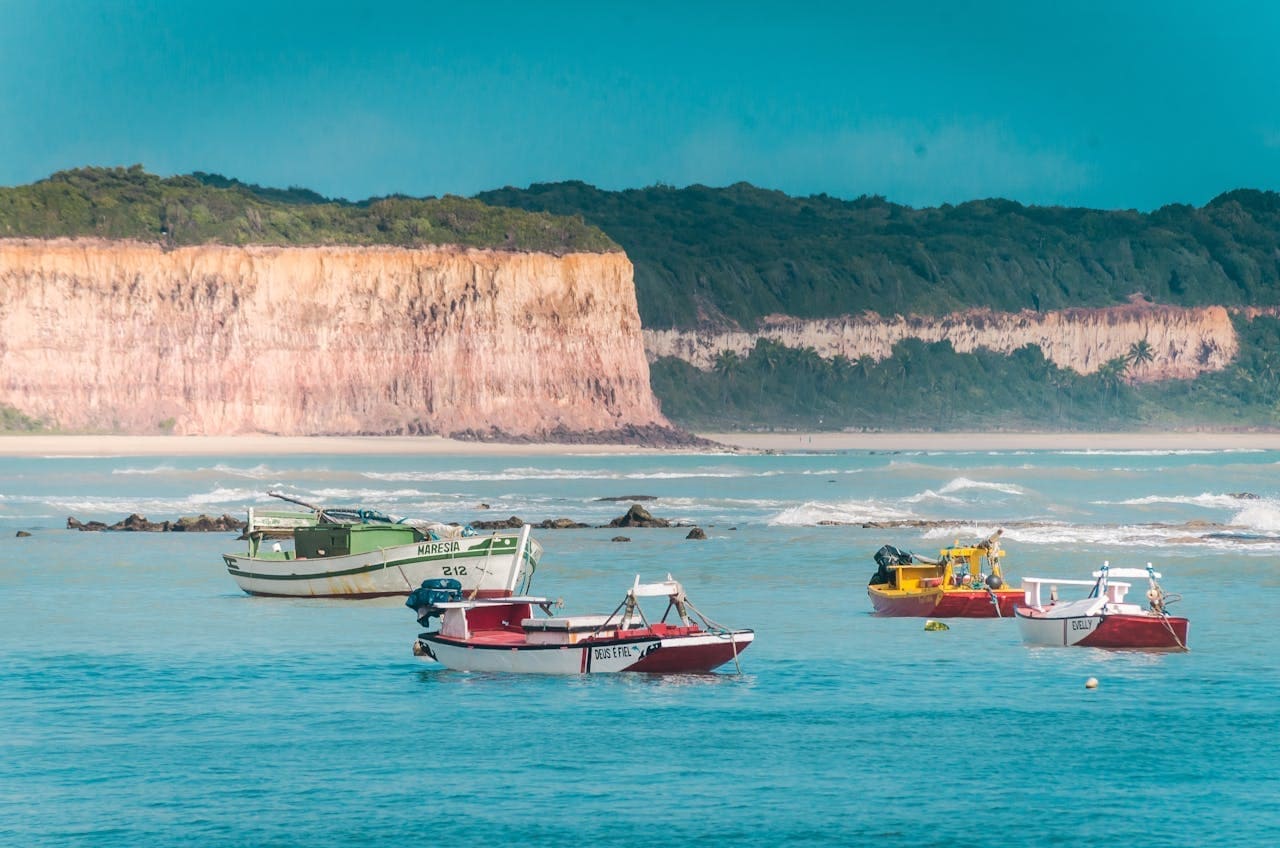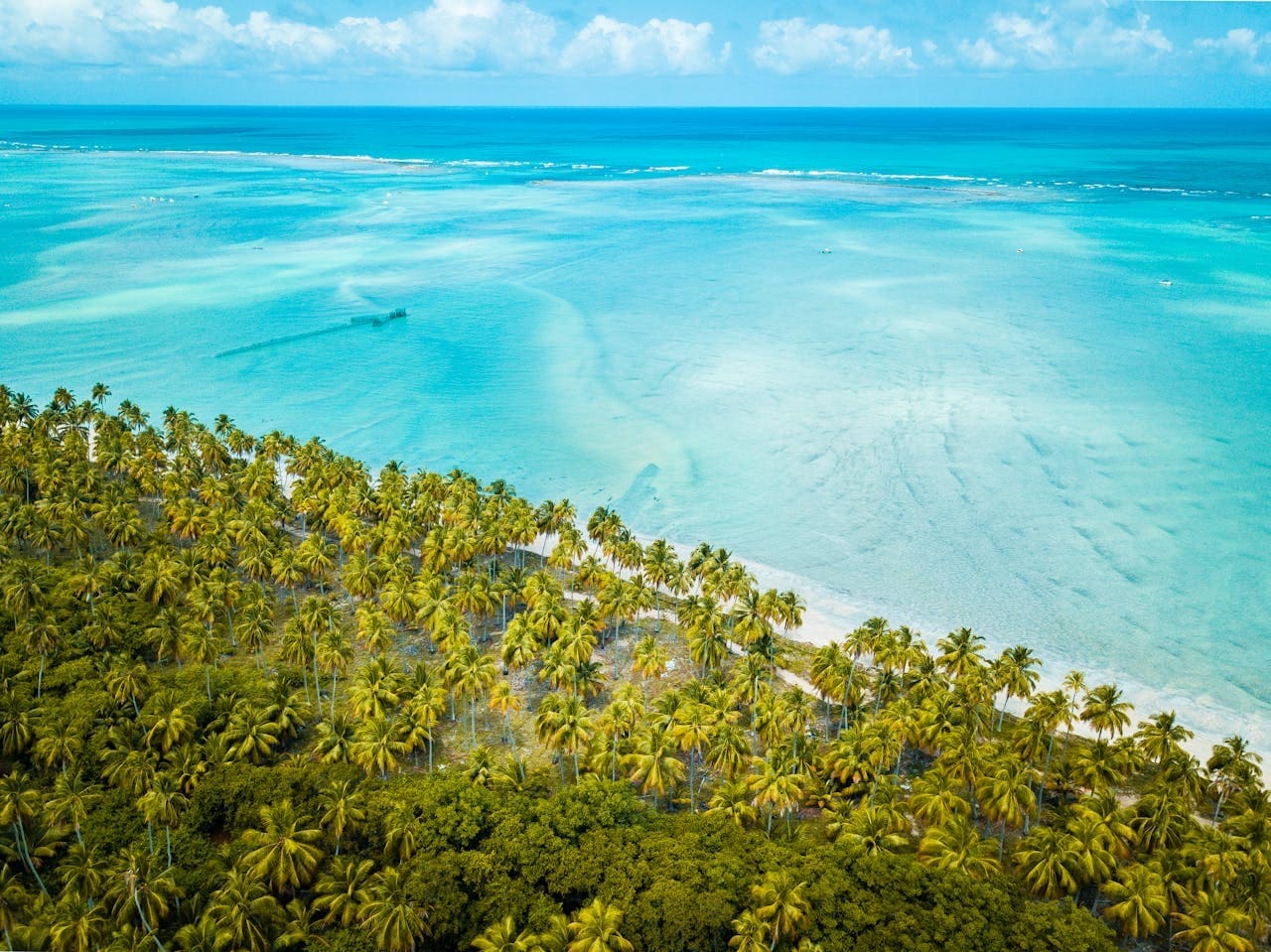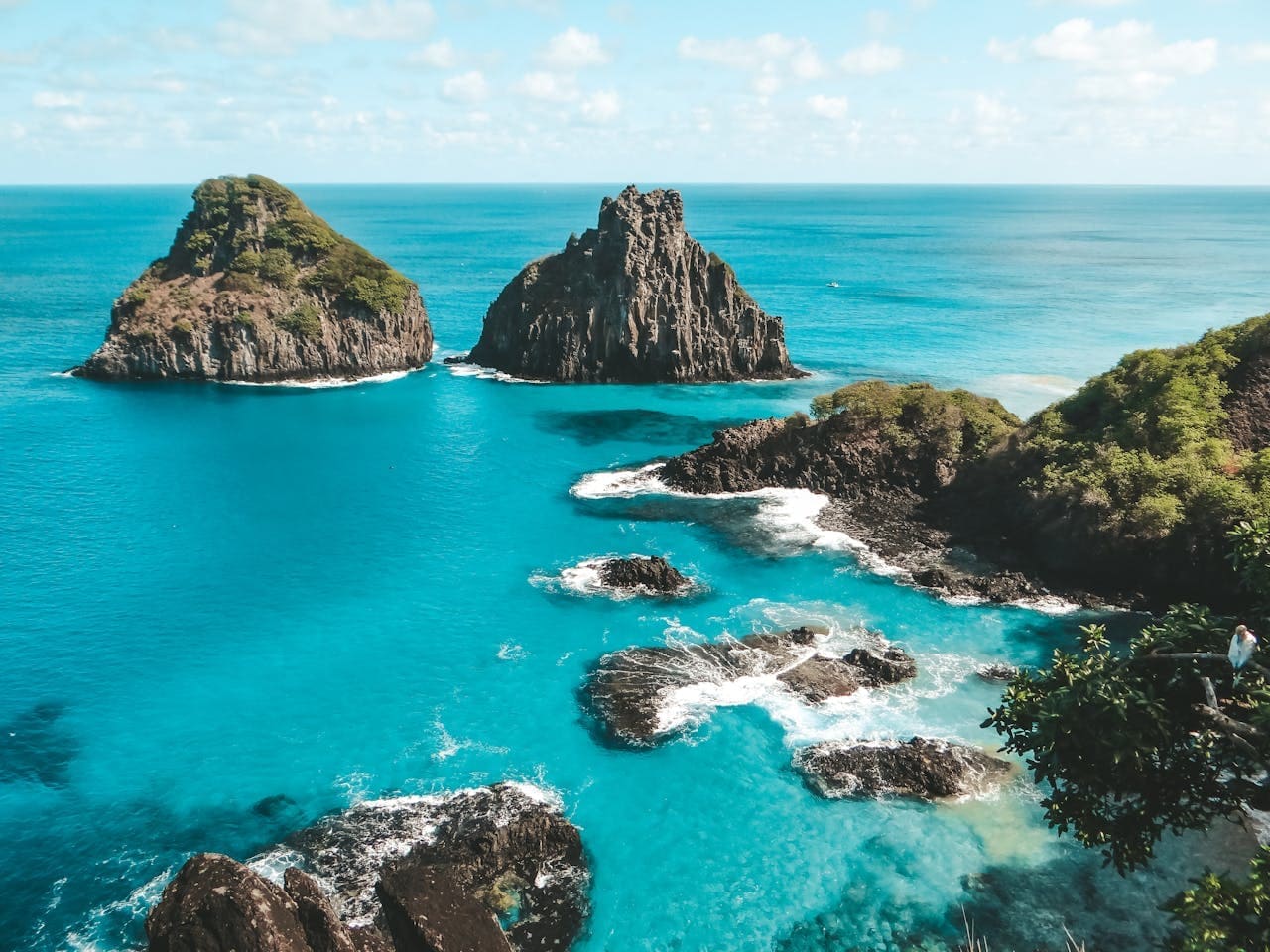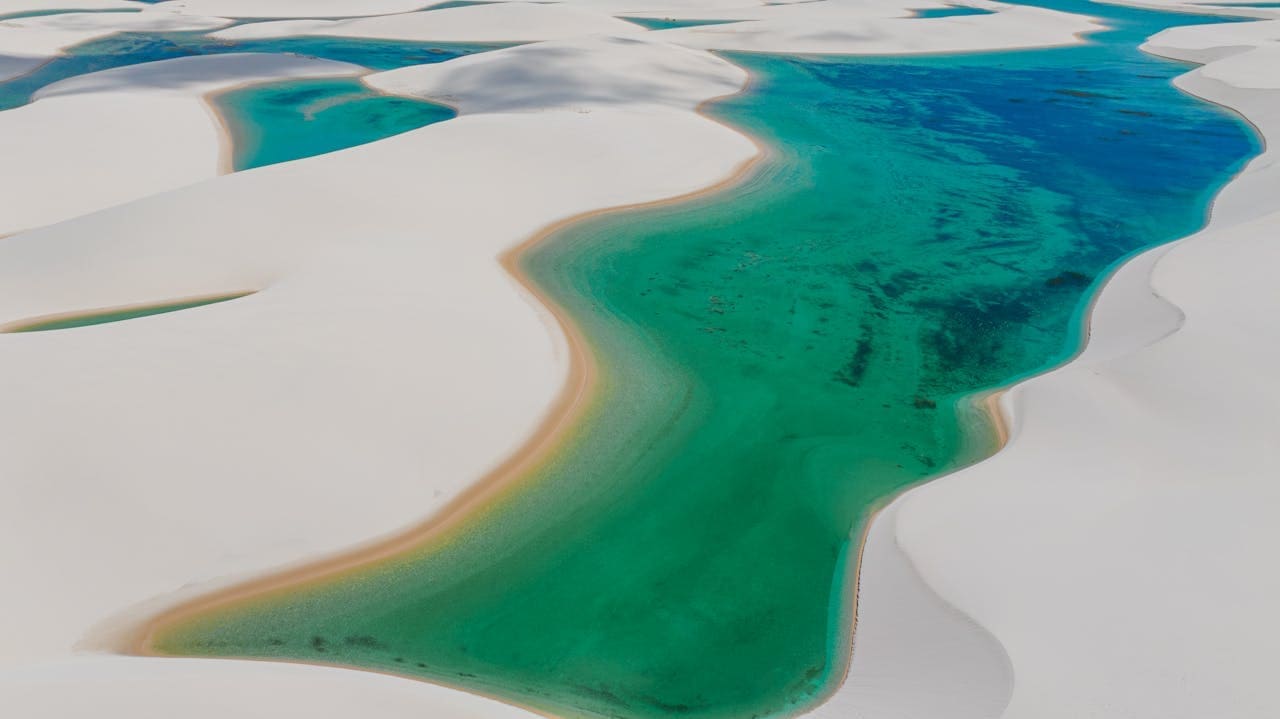Rio Grande do Norte , located on the “corner of the continent” of South America, is a Brazilian state blessed with unique nature and breathtaking coastal landscapes. Known as the “Land of the Sun”, its privileged climate is combined with a coastline marked by imposing dunes, colorful cliffs, paradisiacal beaches, coral reefs and a constant wind that sculpts the landscape and attracts lovers of water sports.
Dunes and Lagoons: The Classic Potiguar Scenery
One of the most famous landmarks of Rio Grande do Norte is its spectacular sand dunes. The Parque das Dunas and the Genipabu region offer a setting reminiscent of a desert by the sea, with its moving and fixed dunes. Here, exciting buggy rides “with or without thrills” are a must, gliding along the golden sands and revealing incredible views of the ocean. The landscape is complemented by the presence (exotic, non-native) of dromedaries for rides.
Interspersed between the dunes are crystal-clear freshwater lagoons, true oases for a refreshing dip. Pitangui Lagoon and Jacumã Lagoon are must-see stops on tours, offering not only swimming but also fun activities such as “skibunda” (sliding down the dunes on a board) and “aerobunda” (zip line that ends in the water).
South Coast: Cliffs, Dolphins and Charm
The coast south of Natal is marked by imposing reddish cliffs that frame beaches of stunning beauty. The absolute highlight is Praia da Pipa, an internationally renowned destination. Its beaches, such as Praia do Amor (with its heart shape seen from the top of the cliffs) and Baía dos Golfinhos (where it is common to see dolphins swimming close to the coast, especially at low tide), are world-famous. Chapadão, a large plateau on the cliffs between Pipa and Praia do Amor, offers spectacular panoramic views, especially at sunrise or sunset. Neighboring Tibau do Sul, with the beautiful Lagoa de Guaraíras, is another must-see spot, known for its unforgettable sunsets.
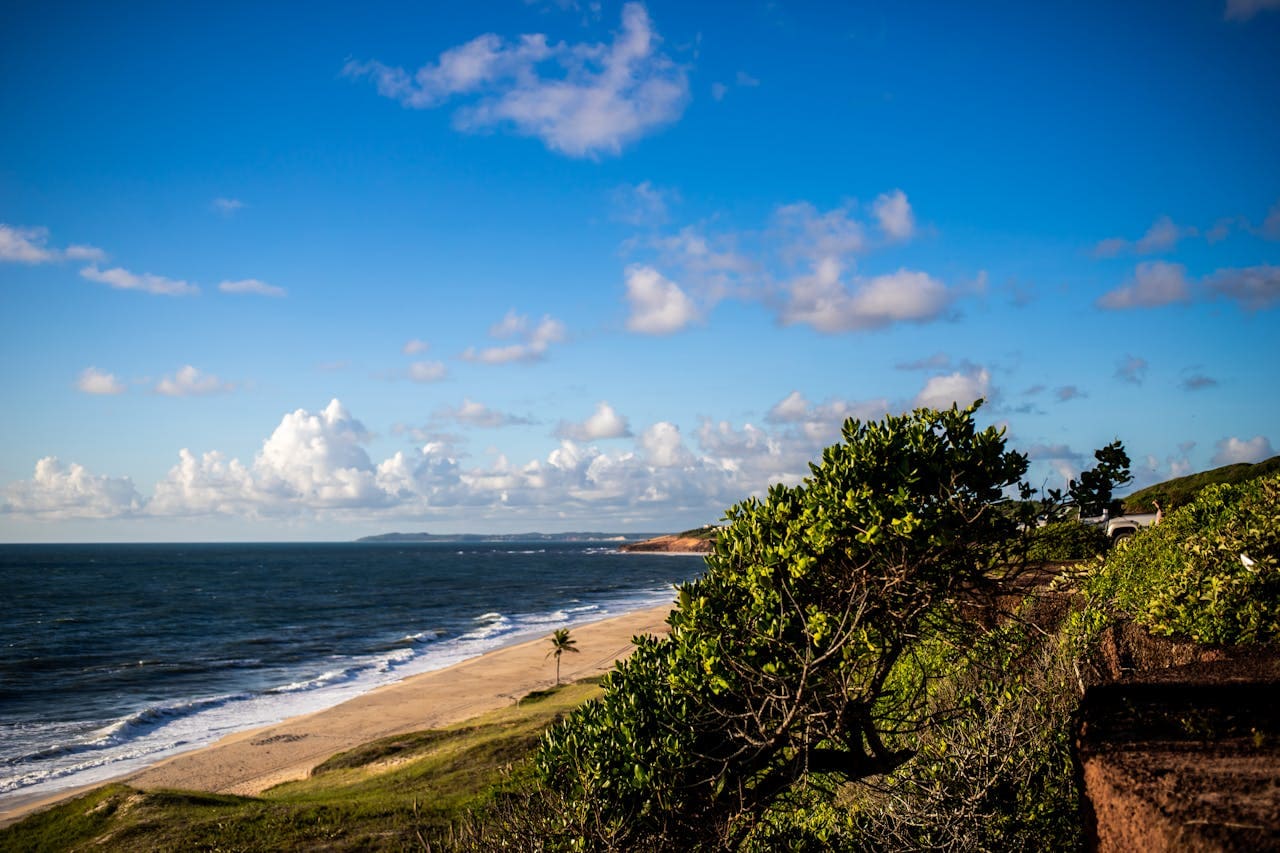
North Coast: Reefs, Winds and Tranquility
Heading north from the capital, the landscape changes. In Maracajaú, the parrachos (coral reef formations) create, at low tide, large natural pools full of colorful marine life, accessible by boat. It is an ideal place for snorkeling or scuba diving, often referred to as the “Brazilian Caribbean”.
Moving on, São Miguel do Gostoso is a paradise for lovers of wind sports, such as kitesurfing and windsurfing, thanks to the constant and strong trade winds. Its extensive beaches and peaceful atmosphere attract those seeking peace and quiet and direct contact with nature. Nearby, in Touros , is the Calcanhar Lighthouse, the largest in Brazil and a landmark on the “corner” of the Brazilian coast, the easternmost point of the continental country closest to Africa.
Christmas and its Natural Icons
The capital, Natal, also has its own urban natural beauty. Ponta Negra Beach is framed by Morro do Careca, an imposing dune that is the city’s postcard (currently closed to climbing for preservation purposes).
Beyond the Coast
Although the coast is the main attraction, the interior of Rio Grande do Norte also holds unique beauties, such as the rock formations and cave inscriptions of Lajedo de Soledade and the characteristic landscape of the Caatinga in the Seridó region.
From the gold of the dunes to the red of the cliffs, the crystal blue of the natural pools and the emerald green of the sea, Rio Grande do Norte in the Brazilian Northeast offers a palette of vibrant colors and natural experiences. It is a destination where the strength of the wind and the beauty of the sun come together to create unforgettable scenery in the most famous corner of Brazil.
